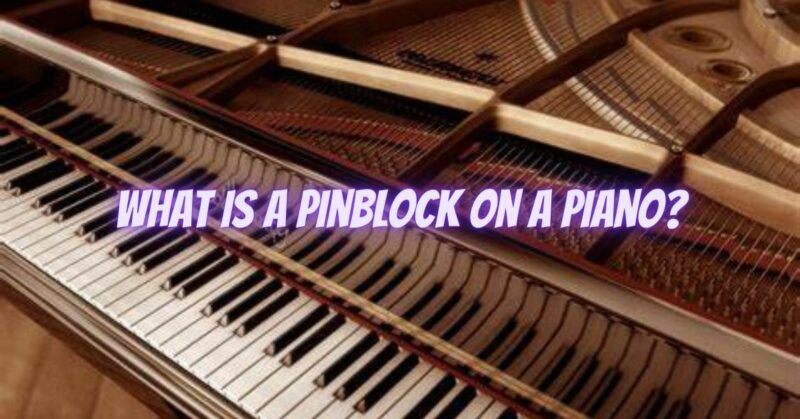Within the complex internal structure of a piano lies a component crucial to its stability and tuning—the pinblock. Although not readily visible, the pinblock plays a vital role in ensuring the proper tension and alignment of the strings. In this article, we will explore what a pinblock is, its significance in a piano, and how it contributes to the instrument’s overall performance.
Understanding the Pinblock:
The pinblock, sometimes referred to as the wrestplank, is a laminated wooden block located at the front of the piano’s case, directly beneath the cast iron plate. It is constructed using multiple layers of hardwood, typically rock maple, that are bonded together to create a strong and stable foundation. The pinblock provides the anchor for the tuning pins, which secure the strings and allow for precise tuning adjustments.
Importance of the Pinblock:
The pinblock’s primary function is to hold the tuning pins firmly in place, ensuring that the strings maintain their desired tension. The tension created by the pinblock, in combination with the strings, is what enables the piano to produce its characteristic sound. Without a properly functioning pinblock, the strings would lose tension, resulting in unstable tuning and compromised musical performance.
Tuning Stability:
The pinblock’s ability to grip the tuning pins tightly is essential for maintaining stable tuning. When a pianist tunes the instrument, they adjust the tension of each string by turning the corresponding tuning pin. The pinblock’s firm hold on these pins prevents them from slipping or loosening over time, helping the piano retain its tuning stability.
String Alignment:
In addition to tuning stability, the pinblock also plays a crucial role in maintaining proper string alignment. The strings pass through precisely drilled holes in the pinblock, ensuring they are correctly positioned and aligned with the other components of the piano, such as the bridges and the keyboard action. This alignment is vital for producing even tone and facilitating precise key response.
Care and Maintenance:
To preserve the integrity and functionality of the pinblock, it is important to maintain a stable environment for the piano. Fluctuations in humidity can cause the wood in the pinblock to expand or contract, potentially compromising its grip on the tuning pins. Maintaining a consistent humidity level, ideally between 40-50%, helps minimize these fluctuations and ensures the long-term stability of the pinblock.
Professional Attention:
Regular maintenance by a professional piano technician is crucial to monitor the condition of the pinblock and address any potential issues. During routine tuning sessions, the technician can inspect the pinblock, check the tightness of the tuning pins, and make any necessary adjustments or repairs. If the pinblock becomes significantly compromised or loose pins are prevalent, professional intervention such as pinblock re-pinning or restoration may be required.
Conclusion:
The pinblock, often unseen but undeniably vital, serves as the foundation for tuning stability and string alignment in a piano. This laminated wooden block, positioned beneath the cast iron plate, ensures the proper tension and grip of the tuning pins, contributing to the instrument’s overall performance. By understanding the significance of the pinblock and providing appropriate care and maintenance, piano owners can enjoy consistent tuning, reliable performance, and the longevity of their cherished instrument.

